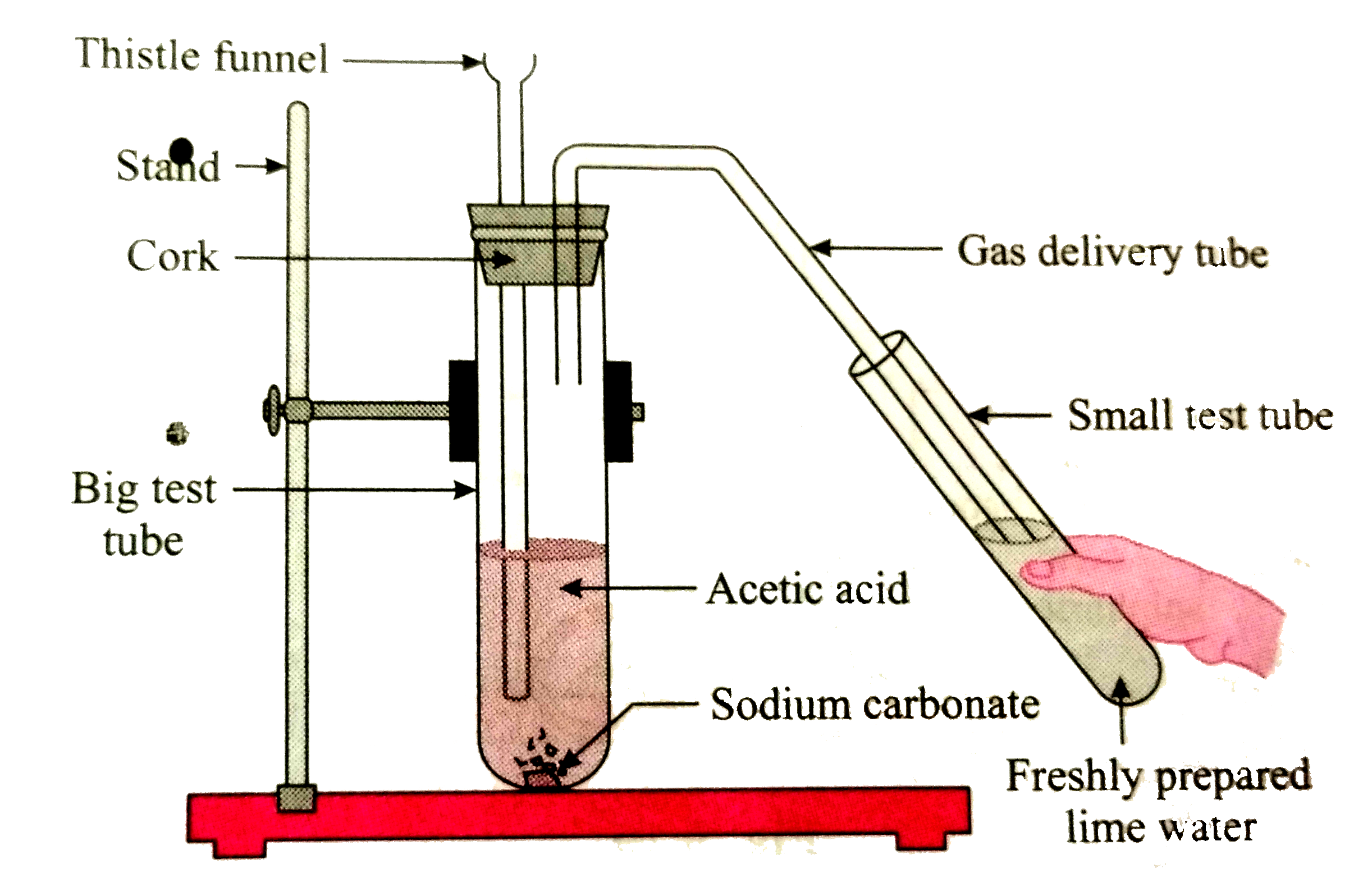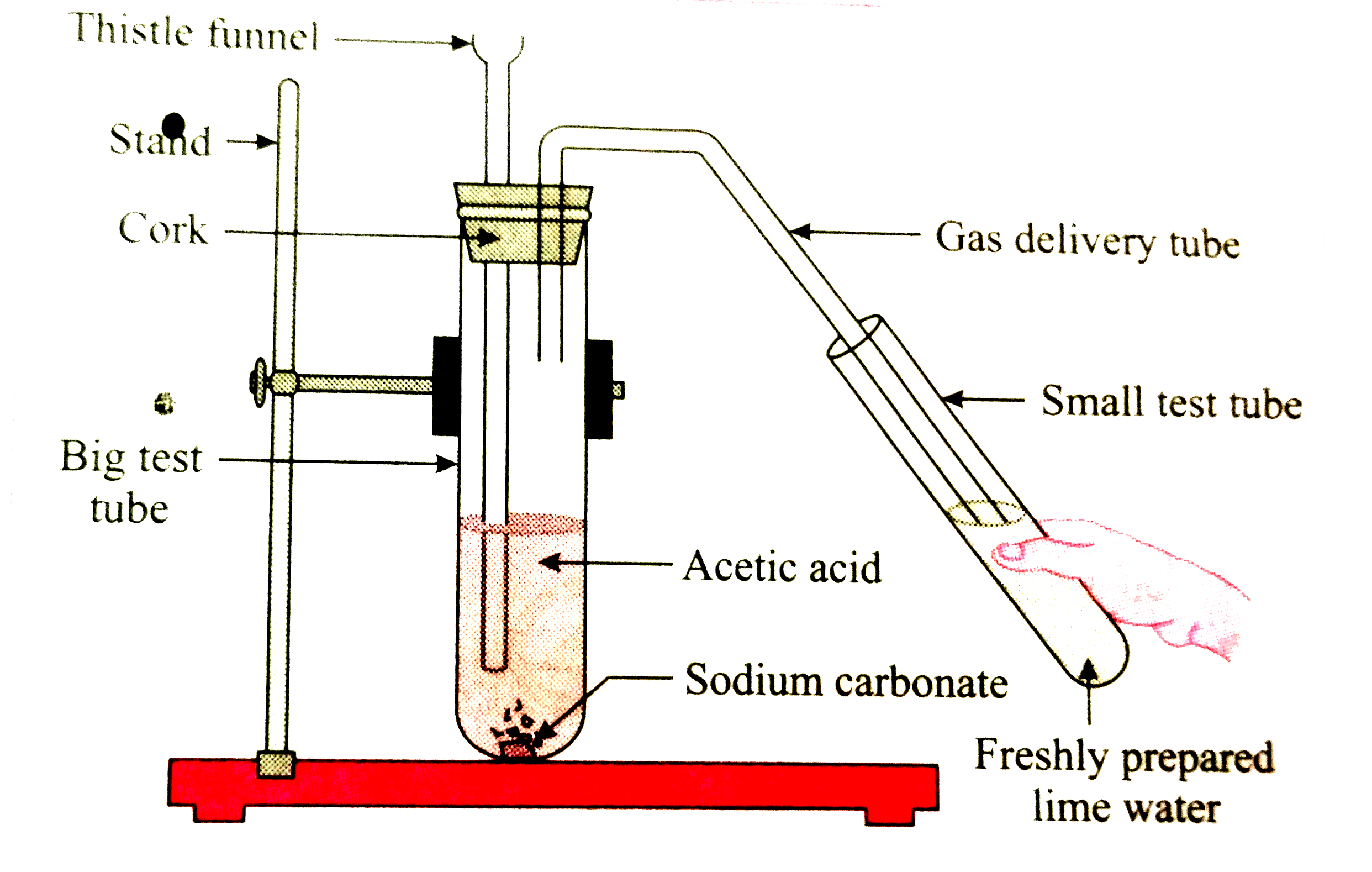Apparatus: Test tube, glass rod, beaker, Bunsen burner, etc.
Chemicals: Hydrochloric acid, ammonia solution, magnesium strip, quick lime, etc.
Activity 1: Take a small amount of hydrochloric acid in a test tube. Heat the test tube. Dip a glass rod in the ammonia solution and hold on the top of the test tube. You will observe a white smoke emanating from the tip of the glass rod. What must have happened? Solution in Marathi
Brown fume emanating from the tip of the glass rod.
White smoke emanating from the tip of the glass rod
A pale green solid is formed on the tip of the glass rod
A brunt out black solid is formed on the tip of the glass rod
Step by step video & image solution for Apparatus: Test tube, glass rod, beaker, Bunsen burner, etc. Chemicals: Hydrochloric acid, ammonia solution, magnesium strip, quick lime, etc. Activity 1: Take a small amount of hydrochloric acid in a test tube. Heat the test tube. Dip a glass rod in the ammonia solution and hold on the top of the test tube. You will observe a white smoke emanating from the tip of the glass rod. What must have happened? by Chemistry experts to help you in doubts & scoring excellent marks in Class 10 exams.
Updated on:21/07/2023Topper's Solved these Questions
- CHEMICAL REACTIONS AND EQUATIONSBOOK - TARGET PUBLICATIONCHAPTER - CHEMICAL REACTIONS AND EQUATIONSEXERCISE - Apply your Knowledge
82 Videos
- CARBON COMPOUNDSBOOK - TARGET PUBLICATIONCHAPTER - CARBON COMPOUNDSEXERCISE - Chapter Assessment(Give scientific reasons.)
3 Videos
- METALLURGYBOOK - TARGET PUBLICATIONCHAPTER - METALLURGYEXERCISE - CHAPTER ASSESSMENT
12 Videos
Similar Questions
What are the types of molecules of elements and compounds?
View SolutionState whether the following statements are true or false. If false then rewrite the correct statements: Carbon is tetravalent and it can undergo catenation.
View SolutionA student added zinc strip to a solution of CuSO4. After several minutes, he observed that the blue colour of solution changed and a layer got deposited on zinc strip. The colour of the solution and that of the coating would respectively be ______
View SolutionRoshan took a small amount of hydrochloric acid in a test tube and heated it. He dipped a glass rod in ammonia solution and hold it on the top of the test tube. He observed a white smoke emanating from the tip of the glass rod.
1. What must have happened? Explain.
2. Write balanced chemical equation for the reaction.
3. Name the type of reaction.
View SolutionApparatus: Big test tube, small test tube, bent gas delivery tube, rubber cork, thistle funnel, stand, etc.
Chemical : Acetic acid, sodium carbonate power, freshly prepared lime water.
Procedure : Arrange the apparatus as shown in figure. Plance sodium carbonate powder in the big test tube. Pour 10 ml acetic acid through the thistle funnel. Observe the changes taking place in the two test tubes.

Which gas does come out as effervescence in the big test tube ?
View SolutionApparatus: Big test tube, small test tube, bent gas delivery tube, rubber cork, thistle funnel, stand, etc.
Chemical : Acetic acid, sodium carbonate power, freshly prepared lime water.
Procedure : Arrange the apparatus as shown in figure. Plance sodium carbonate powder in the big test tube. Pour 10 ml acetic acid through the thistle funnel. Observe the changes taking place in the two test tubes.

Why are bubbles seen in the small test tube ?
View Solutionपरखनली ' A ' एवं ' B ' में समान लम्बाई की मैग्नीशियम की पट्टी लीजिए । परखनली ' A ' में हाइड्रोक्लोरिक अम्ल ( HCl ) तथा परखनली ' B ' में ऐसीटिक अम्ल (CH3COOH) डालिए । किस परखनली में अधिक तेजी से बुदबुदाहट होगी तथा क्यों ?
View SolutionApparatus: Test tube, glass rod, beaker, Bunsen burner, etc.
Chemicals: Hydrochloric acid, ammonia solution, magnesium strip, quick lime, etc.
Activity 1: Take a small amount of hydrochloric acid in a test tube. Heat the test tube. Dip a glass rod in the ammonia solution and hold on the top of the test tube. You will observe a white smoke emanating from the tip of the glass rod. What must have happened?
View SolutionApparatus: Test tube, glass rod, beaker, Bunsen burner, etc.
Chemicals: Hydrochloric acid, ammonia solution, magnesium strip, quick lime, etc.
Activity 2: Hold a magnesium (Mg) strip in a pair of tongs and ignite. What will you observe?
View SolutionApparatus: Test tube, glass rod, beaker, Bunsen burner, etc. Chemicals: Hydrochloric acid, ammonia solution, magnesium strip, quick lime, etc. Activity 3: Take water in a beaker up to half of its capacity. Add a few pieces of quick lime (calcium oxide, CaO) to it. What will you observe?
View SolutionApparatus: Two test tubes, bent tube, rubber cork, burner, etc. Chemicals: Calcium carbonate, freshly prepared lime water. Procedure: Take some calcium carbonate in a test tube. Fit a bent tube to this test tube with the help of a rubber cork. Insert the other end of the bent tube in the freshly prepared lime water taken in the other test tube. Heat the powdered calcium carbonate in the first test tube strongly. What will you observe?
View SolutionApparatus: Test tube, glass rod, beaker, Bunsen burner, etc. Chemicals: Hydrochloric acid, ammonia solution, magnesium strip, quick lime, etc. Activity 1: Take a small amount of hydrochloric acid in a test tube. Heat the test tube. Dip a glass rod in the ammonia solution and hold on the top of the test tube. You will observe a white smoke emanating from the tip of the glass rod. What must have happened?
View SolutionApparatus: Test tube, glass rod, beaker, Bunsen burner, etc.
Chemicals: Hydrochloric acid, ammonia solution, magnesium strip, quick lime, etc.
Activity 2: Hold a magnesium (Mg) strip in a pair of tongs and ignite. What will you observe?
View SolutionApparatus: Test tube, glass rod, beaker, Bunsen burner, etc.
Chemicals: Hydrochloric acid, ammonia solution, magnesium strip, quick lime, etc.
Activity 3: Take water in a beaker up to half of its capacity. Add a few pieces of quick lime (calcium oxide, CaO) to it. What will you observe?
View SolutionApparatus: Two test tubes, bent tube, rubber cork, burner, etc.
Chemicals: Calcium carbonate, freshly prepared lime water.
Procedure: Take some calcium carbonate in a test tube. Fit a bent tube to this test tube with the help of a rubber cork. Insert the other end of the bent tube in the freshly prepared lime water taken in the other test tube. Heat the powdered calcium carbonate in the first test tube strongly.
What will you observe?
View SolutionApparatus: Test tube, glass rod, beaker, Bunsen burner, etc.
Chemicals: Hydrochloric acid, ammonia solution, magnesium strip, quick lime, etc.
Activity 1: Take a small amount of hydrochloric acid in a test tube. Heat the test tube. Dip a glass rod in the ammonia solution and hold on the top of the test tube. You will observe a white smoke emanating from the tip of the glass rod. What must have happened?
View Solution
